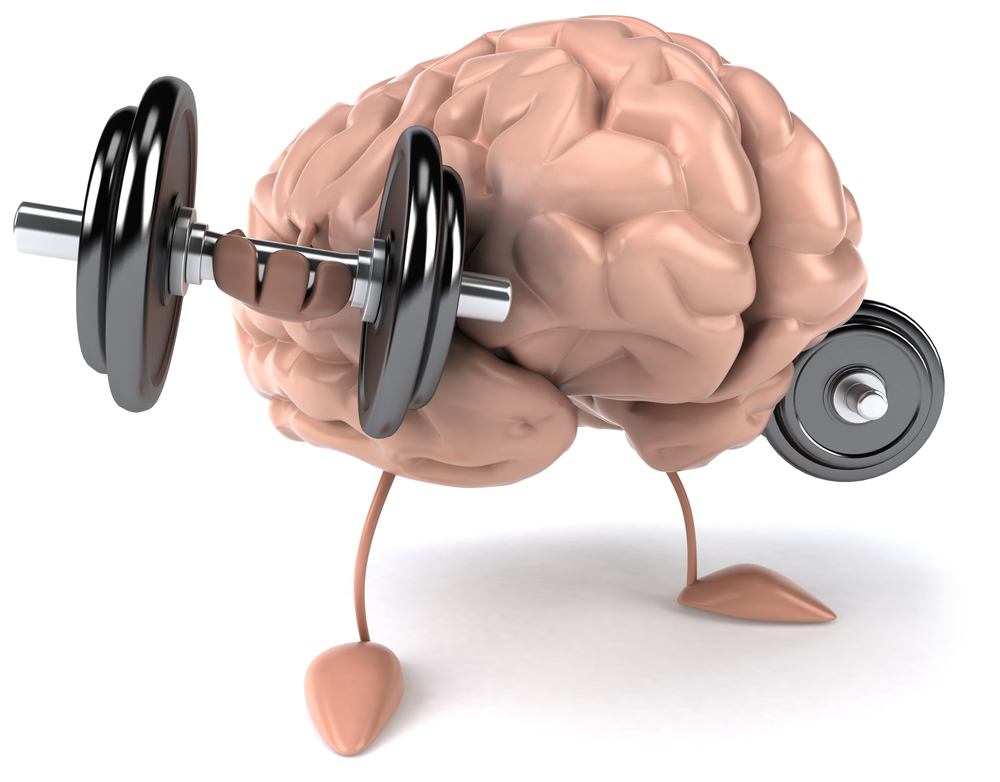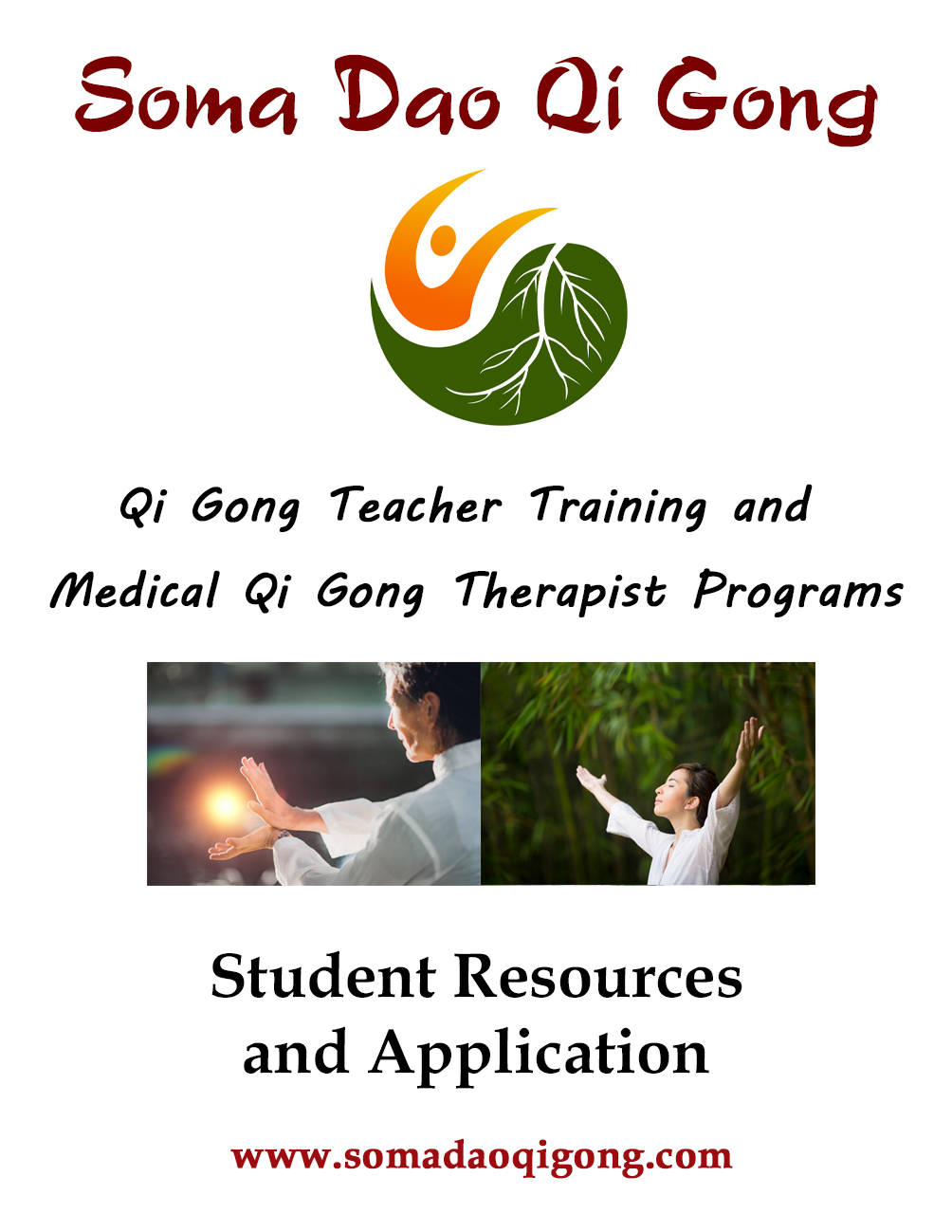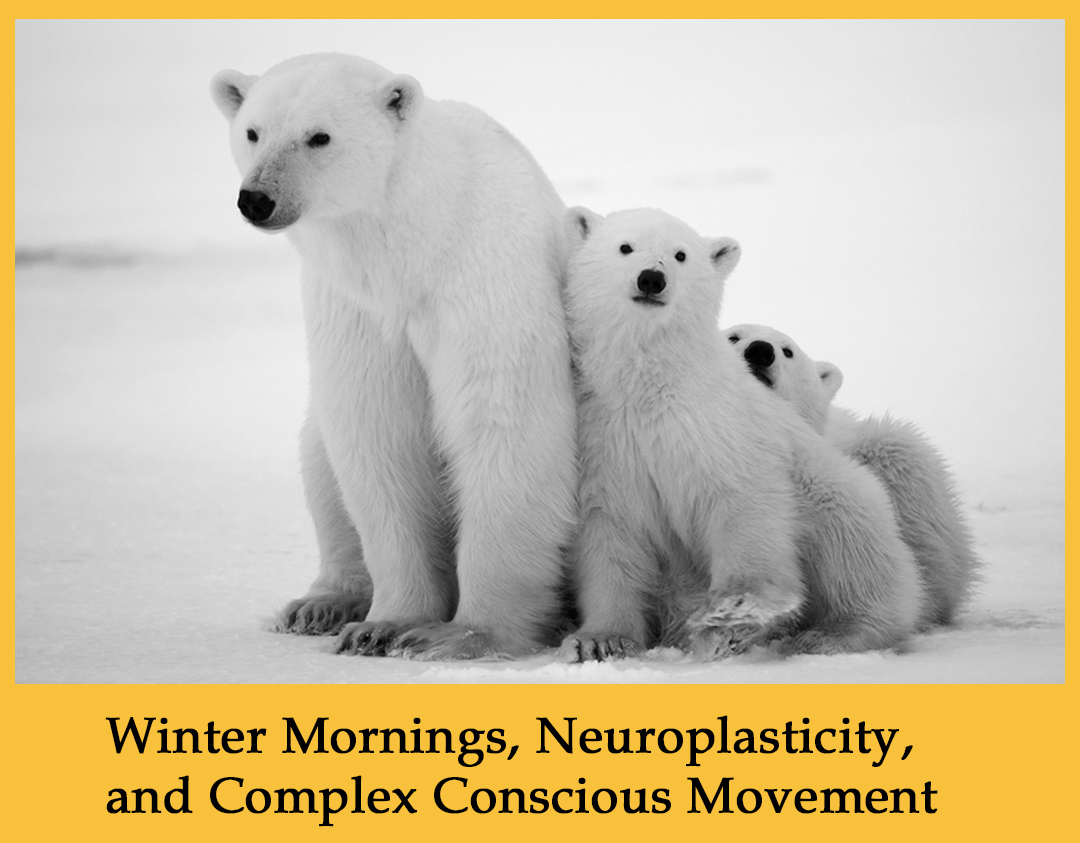Winter Mornings, Neuroplasticity, and Complex Conscious Movement
Winter is often a time of inner reflection and an appreciation of the (relative) stillness of our lives.
In Traditional Chinese medicine, there is an understanding that Winter relates to your Kidney System, which includes your metabolism, hormonal balance, stress physiology, and Neurological health, as well as your actual kidneys.
If you are interested in your health in order to resolve a chronic condition, your TCM Kidneys are the root of your adaptability. They are the storehouse of your Jing – or your Essence, which determines how completely and how rapidly you can heal.
Or, whether you can heal or not…
If you are more interested in improving your ‘health-span,’ as well as your actual longevity, increasing the natural process called Neuroplasticity, can help you regenerate your entire nervous system and parts of your actual brain.
It is no surprise that TCM sees the brain as the reservoir of Jing. People with strong kidneys and abundant Jing are famous for living long, vital, and mentally agile lives.
Chinese medicine sees Neuroplasticity practices as some of the best ways to tonify the Yin and Yang functions of your Kidney System, as well as replenishing your Jing and your Sea of Jing and Bone Marrow – or your Spinal Fluid and Brain.

Winter can be a time of regeneration or a time of exhaustion.
I live in a community where Skiing, snowboarding, hiking, and every other outdoor sport is like a religion. Most people are engaged, every season, every year, in some kind of challenging physical activity.
Which can be a source of incredible vitality, or – sometimes – a drain on your last resources, when you may need them for other things. When I meet people in mid-life who are VERY active all year, who are also depressed, exhausted, have poor tissue healing, and have a low libido, I always recommend taking some time to explore the Qi of Winter.
And to focus on Neuroplasticity!
HERE is a link to an article called, Rest, Recovery, and the Importance of Winter
At some point, most of us need to have an old school Winter of more stillness, and more focus on the internal aspects of fitness, health, and longevity – especially for our Kidneys. Which are like the bank accounts of your health, vitality, and your sense of Mojo!
Over the next few days, I will be sharing a series of articles on Neuroplasticity and how to maximize this healing ‘sauce’ – Every Morning!
By challenging your nervous system, agility, coordination, and stillness, on several different levels, randomly, before you scroll through the apps on your phone, you are activating a latent adaptive response – including an increased ability to learn.
I will go into detail, explaining why randomness and morning practices are so important, in a moment. First, I want to introduce you to this series of articles on Winter practices that have incredible short-term and almost unbelievable long-term benefits.
Each article will discuss a practice, or an aspect of many practices, that you can learn and try – right away!
Each article will be linked to a couple of quick videos showing examples of each practice.
The next four will be about consciously increasing Neuroplasticity with some easy-to-learn exercises and interactions.

What is Neuroplasticity?
Any conversation about the health of your brain, longevity, and preventing decline or degeneration needs to include Neuroplasticity.
And no conversation about Neuroplasticity would be complete without exploring the value of a consistent, committed, and yet random morning practice. Especially one that focuses on Complex and Conscious Movement – which includes stillness!
It turns out that there are many unexpected and evolutionary reasons why a morning practice is so much more effective. Just like a muscle, if you want your brain to be strong, ‘large’, and fit, you will need to do some training. Specifically, challenging your brain in just the right ways to engage the naturally occurring superpower called Neuroplasticity.
Neuroplasticity is the science and precise understanding of how your nervous system, your mind, and the physical structures of your brain can continue to learn, repair themselves, stay active, and avoid loss of function for as long as possible. Not that long ago, it was understood that your brain stops repairing itself and often physically shrinks as you age. Now we know that the opposite is also true. Although, it is true that your brain stops (or slows) growing and changing at around 25 years of age, learning and regeneration are ‘potentially constant’ until the last few weeks of life.
You will just have to actively engage and challenge your birthright to learn new things and allow your body to play with random challenges.
Maintaining and Improving Neuroplasticity
One of the best ways to improve your Neuroplasticity is through complex movement. Playing sports, dancing, Qì Gōng, Yoga, Pilates, and many other fitness practices that help keep you active and invested in your Mind/Body interactions and interconnections is just something your brain needs. NEEDS!
Or else…
The more precise, interactive, engaging, random, spontaneous, and intuitive your practices are, the better they will work towards your gradually increasing Neuroplasticity.
Here are a few examples:
- Resistance Training
- Fasting
- Playing Sports
- Recreational Fitness (Skiing, canoeing, etc…)
- Standing or Moving Meditation
- Deep Stretching
- Resistance Training
- Breathwork
- Prolonged Stillness
- Regular Complete Silence (or natural sounds like rain falling)
- Anything that includes or combines Dancing, Singing, and Music
Standing or Moving Meditation practices like Qi Gong, Tai Chi, and Yoga are popular approaches to reconnecting with your body, posture, and breath. By staying on your feet, and feeling into your alignment and posture, you are putting a natural load on your skeleton and nervous system. By adding gentle and precise movement, you are activating deeper parts of your instinctual nervous system which shifts your stress physiology from danger back towards your birthright of play. Many of these can be practiced in a chair or on the floor.
Think of this opportunity as your body’s happy place.
Coordination and Proprioception
One of the most essential aspects of your Mind/Body connection is called Proprioception, which means ‘perception of movement and position’.
If you close your eyes, you should be able to touch the tip of your nose with your finger. That is meant to happen because your brain knows where your fingertip is based on the change in length of all of your muscles. Proprioception is this internet-like connection of your entire nerve, muscle, and bone system of embodied existence.
The reason the police make people touch their noses when they get pulled over is to test their proprioception or the present state of their frontal cortex. Alcohol disorients or ‘shrinks the volume’ of coordination in your frontal cortex. So does sitting all day! So does scrolling on screens for more than a few minutes!
If you want to support your brain, then explore and challenge every aspect of your Proprioception.
Resistance Training of any form is the fastest way to improve Proprioceptive capacity. You can use free weights, machines, body weight, or any other chance to push, pull, twist, and balance. Within three weeks, your nerve-muscle network, including Human Growth Hormone (HGH) will begin to change the way your nervous system remembers itself. Your muscle cells will create more mitochondria, your nerves can conduct more capacity, and your meridians can conduct more Qi and Blood.
This creates the best foundation for longer-term changes in Neuroplasticity. I have seen Elders who were diagnosed with a degenerative condition decide to become fit, muscular, and mentally agile in their 60s and 70s. Across the world, Elders who spend more time in the gym or more time in some kind of embodied practice like Qi Gong or Yoga are living longer and more agile lives – in every way!
Deep Stretching is great for proprioception because you develop a more refined sense of position and alignment.
Standing/Moving Meditation, Dancing, and Prolonged Stillness all help you develop some of the extremes of Proprioception.
Standing still for extended periods, relaxing and settling every minute or two, will teach you more about alignment, balance, and your layers of connective tissue than anything else I have learned.
Imagine your entire nervous system feeling connected and playful enough to dance to any kind of music. Prolonged states of embodied presence and exploration, reaching into the stillness is one of the reasons why Qi Gong and Yoga were invented, and why they are practiced around the world every day.
Check out the two short videos below. The first one shows a series of principles for good structural alignment. The second shows a challenging martial arts practice that requires significant coordination. (You can learn those practices in a course I am offering this Winter.)
Breathwork and Singing can help with proprioception in some subtle ways as we will see next. In the context of Proprioception, it is important to point out that controlling your diaphragm has some deep connections to your Polyvagal system, which is the part of your nervous system that is most affected by chronic stress, inflammation, and Trauma.
Stillness and Silence
Humans are unique in the animal world because we can predict outcomes. If you were to stand still for 20 minutes, what do you predict you would spend most of that time thinking about?
Prediction helps us collaborate and create the world together. Prediction will also create an inner world. If life is getting out of control or too disorienting and painful, then what you predict will reflect that. Regular deep dives into Stillness and Silence allow your Mind/Body integration and Neuroplasticity a ‘predictable opportunity’ to stop predicting and projecting, so you can rest and reorient to the world.
Sometimes, in a meditation practice, you are unable to ignore what is going to happen in 10 minutes, or the next 10 years. Or, you may feel regretful, resentful, or sad, or mad about what happened 10 minutes, or 10 years, or even ten thousand years ago.
Sometimes, in a meditation practice, you will find the presence and curiosity to feel. To feel it all. To feel deeper into the abyss and find the infinite wisdom and compassion that is there. To feel into the subtle nature of your body and begin the journey of interacting with your Energy Centers and your Innate Minds.
Meditation is practiced around the world – because it works!!!
Humans learn at least four times better when they are having FUN!
Modern health statistics tell us that you have to use it or lose it! If you want to keep the volume, or the amount of active interconnectedness, or the internet of your brain as robust as possible, then it is time to invest in your proprioception.
Tomorrow, I will share why exercising first thing in the day is the best for Neuroplasticity – and why Flow States are AMAZING!
Structural Alignment
Single Palm Change
Winter Mornings, Neuroplasticity, and Qi Gong
- Standing Meditation (Zhan Zhuang),
- Silk Reeling (Chan Si Jin),
- Longevity practices,
- Breathwork
- Nei Gong Meditation
- Five Animal Shapeshifting Qi Gong,
- and a few other fun surprises.
We will start on Jan 1st, but people can join in until Jan 15th.
Here is a link to LEARN MORE about the course

I am interested in learning more about becoming a Qi Gong Teacher and/or a Medical Qi Gong Therapist and would like to receive your MONTHLY newsletter.
YES! Send me a copy of the Student Resource Guide
(We respect your privacy)
Beginning April 8, 2024
Learn the skills, practices, and principles necessary to safely and successfully guide others through several kinds of Qi Gong Classes.
